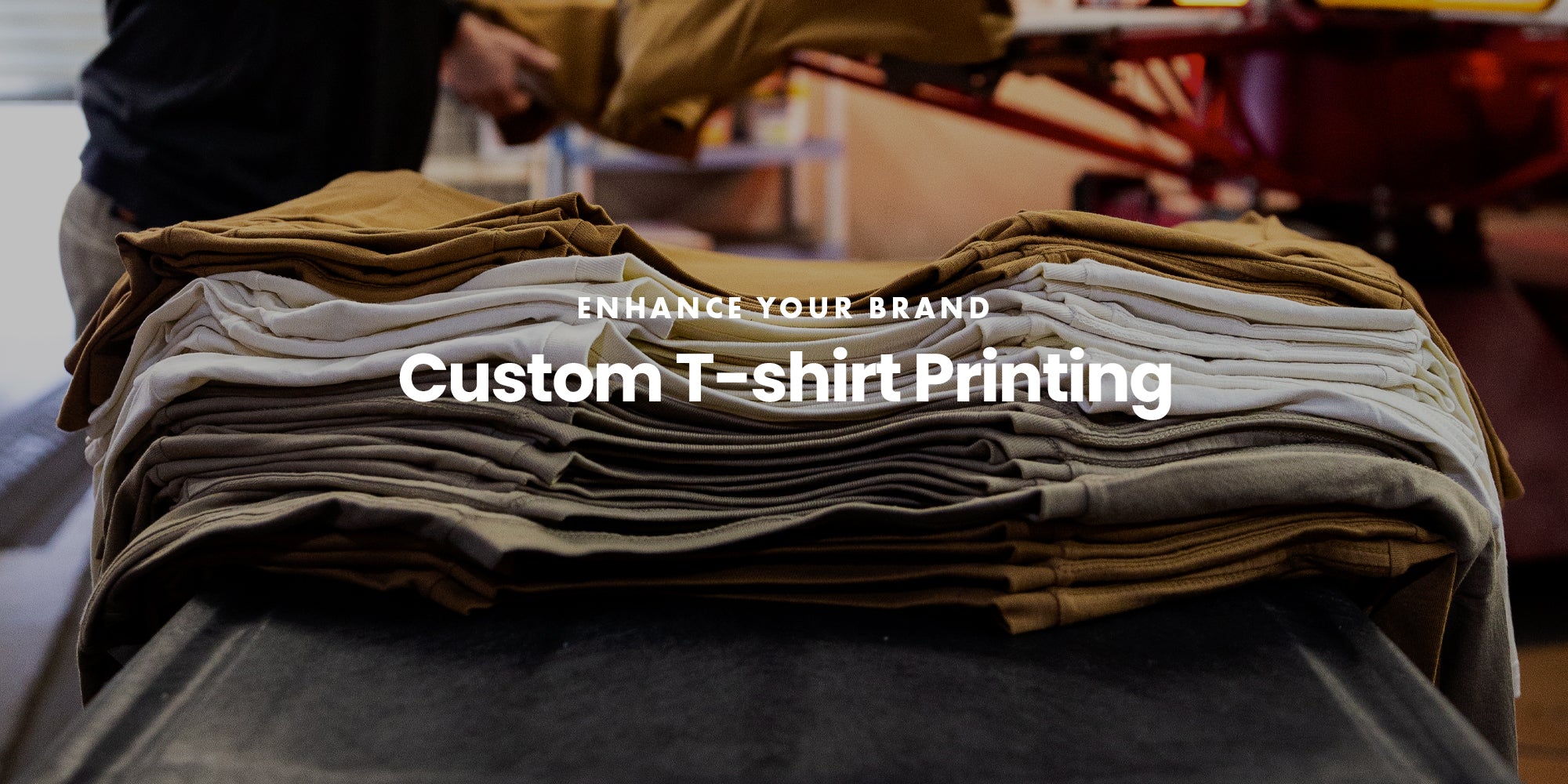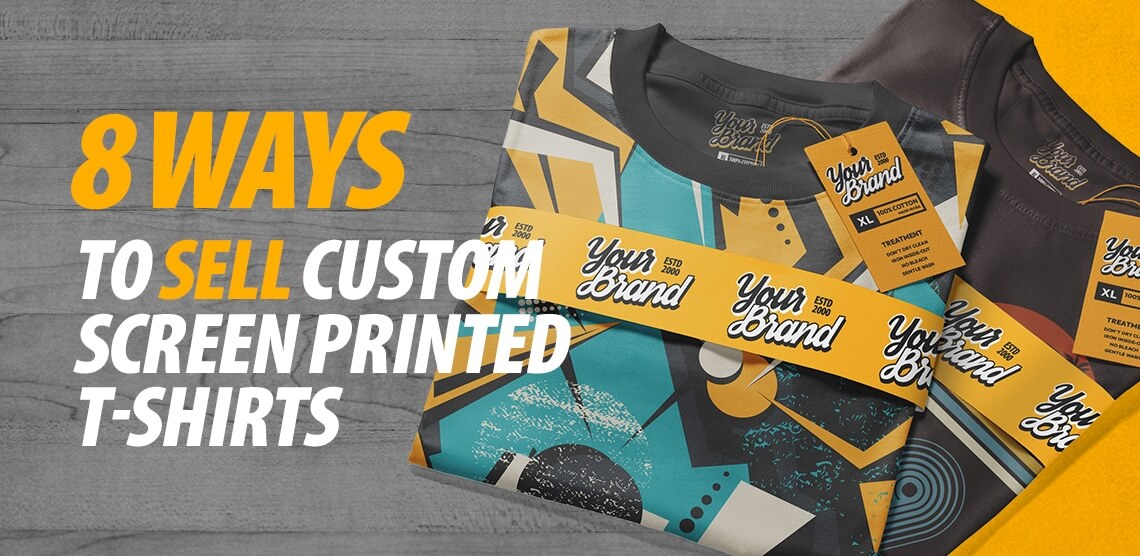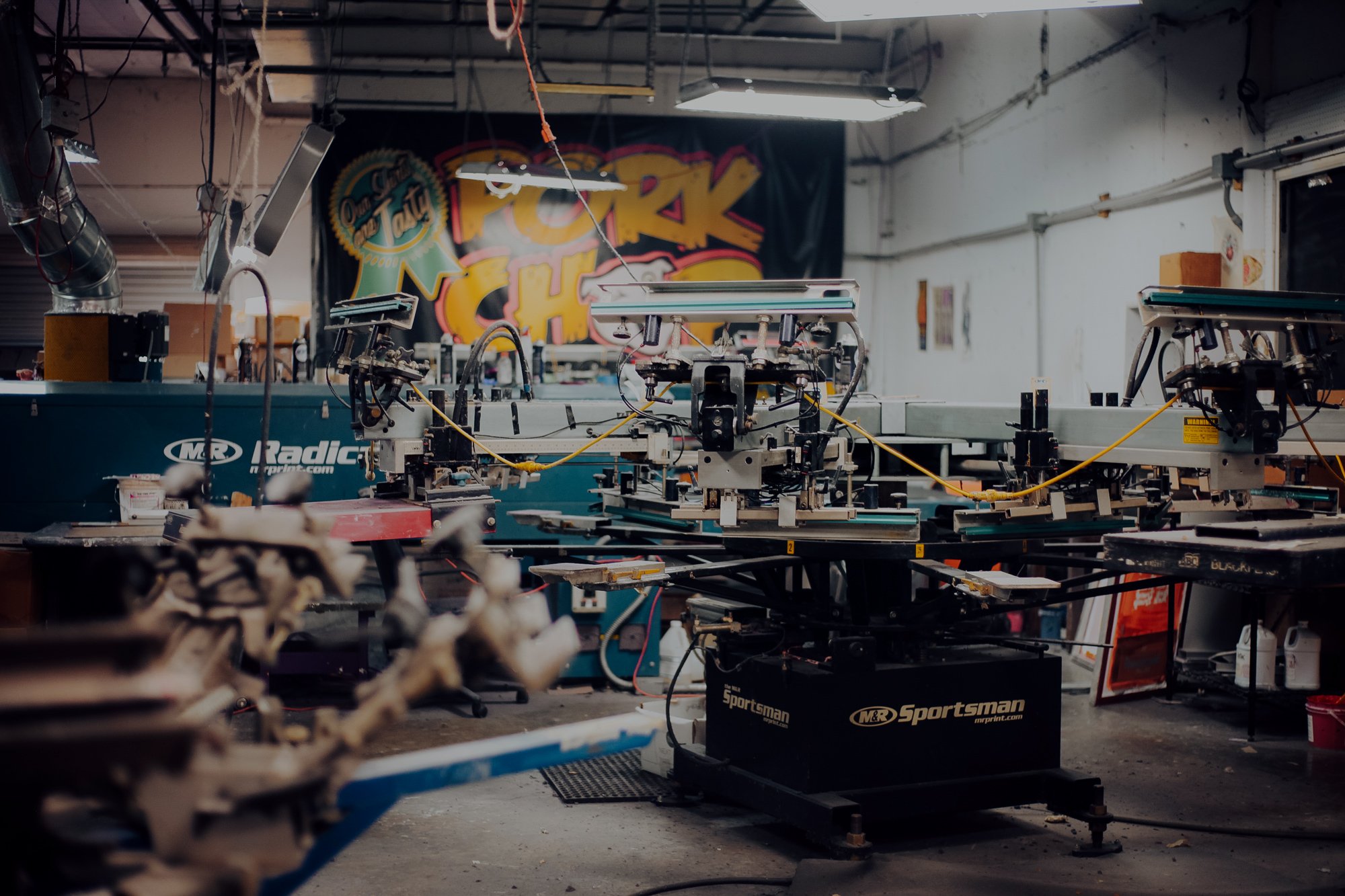High-Quality Custom Screen Printing for Team Apparel
Screen Printing Uncovered: Whatever You Need to Understand About T-Shirt and Garment Printing Strategies
Screen printing is a fascinating technique that combines art with strategy, using limitless possibilities for creativity. All set to explore the essential aspects that make screen printing an art type?
The Basics of Display Printing: How It Functions
When you dive right into display printing, you'll uncover it's both an art and a scientific research. At its core, screen printing entails producing a stencil, or screen, that allows ink to travel through only in certain locations (screen printing kit). You begin by choosing your layout and preparing your screen with a light-sensitive emulsion. As soon as you expose this solution to light, it sets, leaving your design as a negative room.
Next, you'll mix your inks and prepare your printing surface area. Placement the screen over the fabric, then use a squeegee to press ink with the display onto the garment. This procedure calls for accuracy, as you want clear, vibrant prints. After printing, you'll heal the ink with warmth, guaranteeing it follows the fabric and lasts with washes. Each action is essential, and understanding them will boost your display printing abilities, transforming simple garments into one-of-a-kind, meaningful items.
Sorts Of Screen Printing Techniques
As soon as you realize the basics of display printing, it's time to discover the different strategies that can boost your designs. One prominent technique is conventional display printing, where ink is pushed through a stenciled screen. This method is fantastic for vibrant, vivid shades. Then there's water-based ink printing, which provides a softer feeling and is environment-friendly, but it calls for a different approach to treating.
If you're aiming for great information, consider discharge printing. This technique eliminates dye from the textile, leaving a soft, classic look. One more alternative is plastisol printing, recognized for its durability and dazzling colors, making it a favored for numerous brands. Experiment with halftone printing to produce gradient effects and detailed designs. Each method has its one-of-a-kind beauty, so do not hesitate to try them out to locate what suits your design best!
Vital Equipment for Display Printing
To achieve sensational outcomes in screen printing, having the ideal devices is fundamental. Initially, you'll need a sturdy screen printing structure, which holds the mesh that transfers your style onto the garment. Next, buy top quality squeegees; these are crucial for applying ink equally throughout the screen. You'll also need a great direct exposure system to create your screens, along with a washout booth for cleaning them after use. A reliable warm source, like a conveyor dryer or warmth press, is vital for curing your prints to guarantee long life. Don't fail to remember a proper work area, equipped with tables and storage space for your materials. Ultimately, safety equipment, such as gloves and masks, will maintain you safe from chemicals and inks. With the right devices, you'll be well on your means to creating professional-quality prints.
Selecting the Right Inks and Products
When picking inks and materials for screen printing, you need to take into consideration the type of ink that functions finest for your task. Consider material compatibility to guarantee your styles look last and terrific lengthy. Check out green ink choices to make your printing process extra lasting.
Kinds Of Screen Inks
Choosing the right screen ink is crucial for accomplishing vivid, durable prints that fulfill your task's requirements. There are numerous kinds of screen inks to examine. Plastisol ink is popular for its versatility and convenience of usage, offering outstanding color opacity on dark materials. Water-based ink, on the various other hand, offers a softer feel and is green, making it ideal for those looking to minimize their environmental effect. Release inks remove color from the fabric, causing a soft, classic look however need details handling. Ultimately, specialty inks, such as glow-in-the-dark or metal, can include special impacts to your designs. Assess your job requirements and pick the ink that straightens finest with your preferred end result.

Fabric Compatibility Considerations
Understanding textile compatibility is important for achieving premium display prints, especially considering that various products respond distinctively to various inks. When selecting inks, take into consideration the fabric kind-- cotton, polyester, or blends. For cotton, water-based inks work well, using softness and breathability. Polyester, on the various other hand, commonly requires plastisol inks for far better attachment and dynamic shades. If you're printing on blends, you might need to utilize a combination of both types. Always examine your inks on example fabric to guarantee they stick properly and keep color honesty. Furthermore, bear in mind that textile weight and appearance can affect the last end result, so selecting the appropriate ink and material combination is essential for your project's success.
Eco-Friendly Ink Options
Environment-friendly inks are coming to be a popular selection for screen printers that want to lessen their ecological effect while preserving high quality. When choosing inks, consider water-based inks, which are less harmful and simpler to clean up contrasted to standard solvents.
Furthermore, search for inks made from eco-friendly sources, such as soy or vegetable-based alternatives. By selecting the ideal inks and materials, you'll not just produce magnificent styles however likewise contribute to a much more lasting printing process. Make the switch, and your prints will mirror your dedication to the setting!
Preparing Your Layout for Screen Printing

File Layout Needs
To guarantee your style looks lively and sharp on textile, you'll need to pay attention to file style requirements for display printing. Begin with vector files like AI or EPS, as they can be scaled without losing quality. If you utilize raster images, choose for high-resolution files, such as TIFF or PNG, preferably at 300 DPI. Prevent using JPEGs, as they can shed clearness when resized. Make certain your layout has a clear background to prevent unwanted white sides on your prints. Lastly, keep shade settings in mind; CMYK is standard for display printing, so convert your RGB creates accordingly. By complying with these guidelines, you'll set your art work up for a successful print.
Shade Separation Methods
Color splitting up is a crucial action in preparing your design for display printing, and understanding it can significantly boost your print quality. You'll require to damage your layout right into private shades, as each shade requires a different display throughout printing. This accuracy not just assures accurate color depiction however also enhances the printing process.
Resolution and Size
Attaining the finest cause display printing starts with ensuring your layout has the ideal resolution and dimension. Ideally, your artwork ought to go to least 300 DPI (dots per inch) for sharp, clear prints. Your last item might look pixelated and unprofessional. if you utilize reduced resolution.
When it concerns dimension, take into consideration the measurements of your print location. Style your artwork to match the final print dimension, ideally producing it in the actual dimensions you'll be publishing. In this manner, you'll prevent any type of unforeseen scaling problems.
Always examine your style in both vector and raster layouts. Vector graphics can be scaled without losing top quality, making them optimal for screen printing. Preparing correctly will guarantee your design looks outstanding on every garment!
Step-by-Step Display Printing Process
Display printing is a dynamic procedure that permits you to produce lively styles on different surfaces. To get begun, you'll require a screen, solution, and your selected ink.
After rinsing the unexposed emulsion, your screen is prepared. Set it up on your printing surface area and align your garment beneath it. Pour ink onto the screen and use a squeegee to press the ink via the pattern onto the textile. Lift the screen carefully and allow the print dry. Lastly, cure the ink utilizing warm to ensure longevity. That's it! You've successfully display printed your style.
Tips for Effective Display Printing Projects
While you're diving into your screen printing projects, bear in mind that prep work is essential to success. Start by collecting all your materials-- inks, garments, displays, and squeegees. A clean workspace assists avoid unwanted mistakes, so clean before you start.
Next, confirm your art work is high-resolution and correctly sized for your garment. Check your display for correct exposure and clean it thoroughly to prevent spots. When mixing your inks, adhere to the manufacturer's standards to achieve the best uniformity.
During printing, use even stress with your squeegee for regular results. Don't rush; take your time to validate each print satisfies your criteria. After printing, allow your garments dry entirely prior to dealing with or packaging them.
Finally, always keep a sample of your help future recommendation. This way, you can assess your progression and boost your strategies gradually. Satisfied printing!

Frequently Asked Concerns
Just how Long Does It Take to Establish a Screen Printing Task?
Establishing a display printing work typically takes around 30 mins to an hour. You'll prepare the screens, mix inks, and change the press. The moment differs based on complexity and experience, so stay arranged!
Can I Print on Various Textile Types Making Use Of the Exact Same Technique?
Yes, you can print on various textile types making use of the same method, yet you'll need to change your setups and inks. Some textiles absorb ink in different ways, so exploring screen printing kit assurances the most effective results for each and every material.
What Prevail Mistakes to Stay Clear Of in Screen Printing?
When display printing, avoid typical mistakes like utilizing the incorrect ink, overlooking appropriate exposure times, or missing pre-press checks. Always evaluate your setup and preserve clean screens to guarantee top quality outcomes each time.
Exactly How Can I Effectively Tidy and Maintain My Display Printing Devices?
To appropriately tidy and maintain your display printing tools, you need to on a regular basis clean displays with suitable solvents, examine mops for wear, and assure all tools are stored dust-free and completely dry. Uniformity protects against pricey fixings and improves efficiency.
Is Display Printing Eco-friendly Compared to Various Other Approaches?
Screen printing can be much more eco-friendly than other techniques, specifically if you utilize eco-conscious materials and water-based inks. By picking lasting products and methods, you minimize waste and decrease your effect on the planet.
Screen Printing Uncovered: Every Little Thing You Need to Know About Tee and Garment Printing Methods
At its core, screen printing involves creating a stencil, or screen, that enables ink to pass with only in specific areas. Setting the screen over the fabric, after that make use of a squeegee to push ink via the display onto the garment. One popular method is typical display printing, where ink is pushed via a stenciled display.When choosing inks and products for display printing, you need to take right into account the kind of ink that works finest for your job.